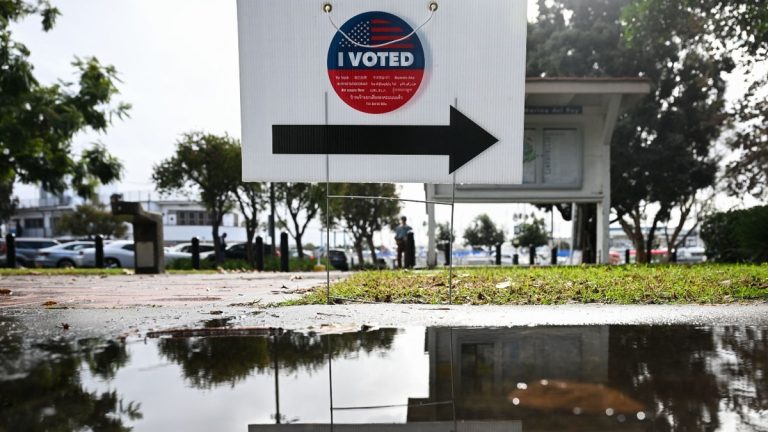In the beginning of voting in America, votes were cast by voice and not paper ballot and were typically done at a local courthouse and recorded in poll books.
This remained the case in most states until the 19th century. According to the University of Virginia, even as oral voting waned, it was still used for 10% of the vote in the 1860 presidential election.
It was feared that both voice voting – and the fact that it was not secret – left people open to intimidation. Voice voting was fully extinct by the end of the 19th century and replaced by the secret ballot.
Over time, the voice vote was replaced by paper ballots, first with tickets and eventually more standardized voting forms that could be used in combination with voting machines – which would become the standard way of voting in the 20th century.
As voting itself evolved, so did the polling places, going from the courthouses of the early days of American democracy to hundreds of thousands of polling places across the country today.
A report on the 2018 election by the Election Assistance Commission found there were more than 200,000 polling places in use on Election Day and more than 600,000 workers providing assistance.
Less than 1% of those were at election offices, with the remaining 99.4% at other locations, including community centers, schools and churches.
Polling locations are typically chosen as central, easily accessible places for voters who are assigned their location. Schools, churches and community centers will typically be easily accessible, people in the community will be able to identify them, and they will typically be more likely to be accessible for the disabled – as well as being large enough to cope with larger numbers of people safely and comfortably.
However, rules guiding polling places differ by state. Article 1, Section 4, of the Constitution states that the rights to conduct elections are reserved for the states, meaning that each state may dictate the regulation and locations where polling locations are held. Texas requires schools to serve as polling locations, but other states do not.
Want to know where your polling place is? Check here on Vote.org/.
Get the latest updates from the 2024 campaign trail, exclusive interviews and more at our Fox News Digital election hub.

